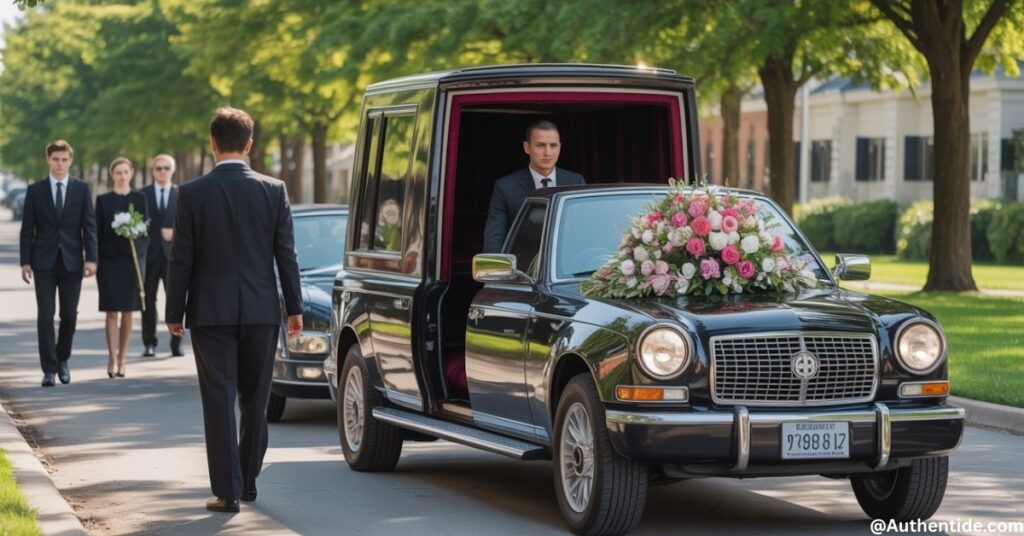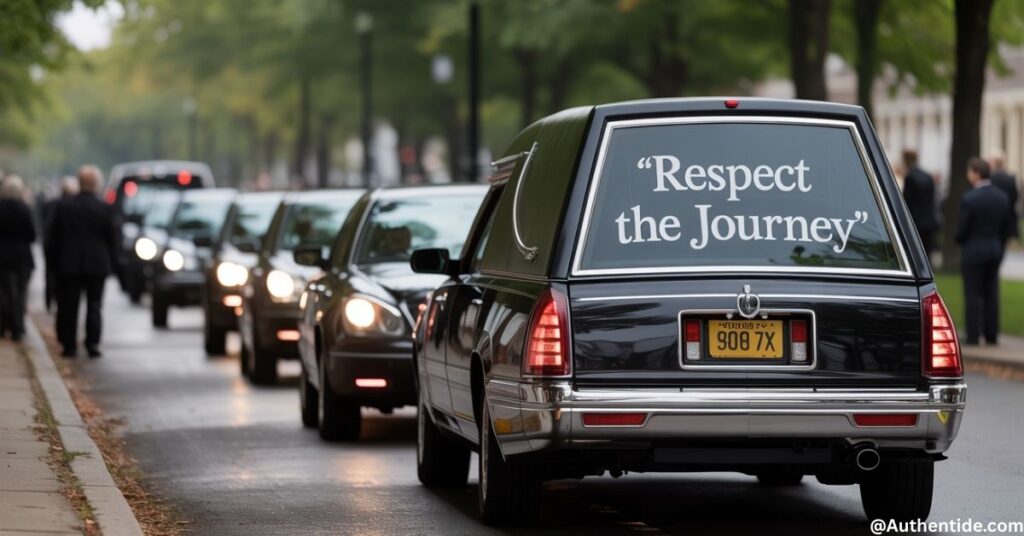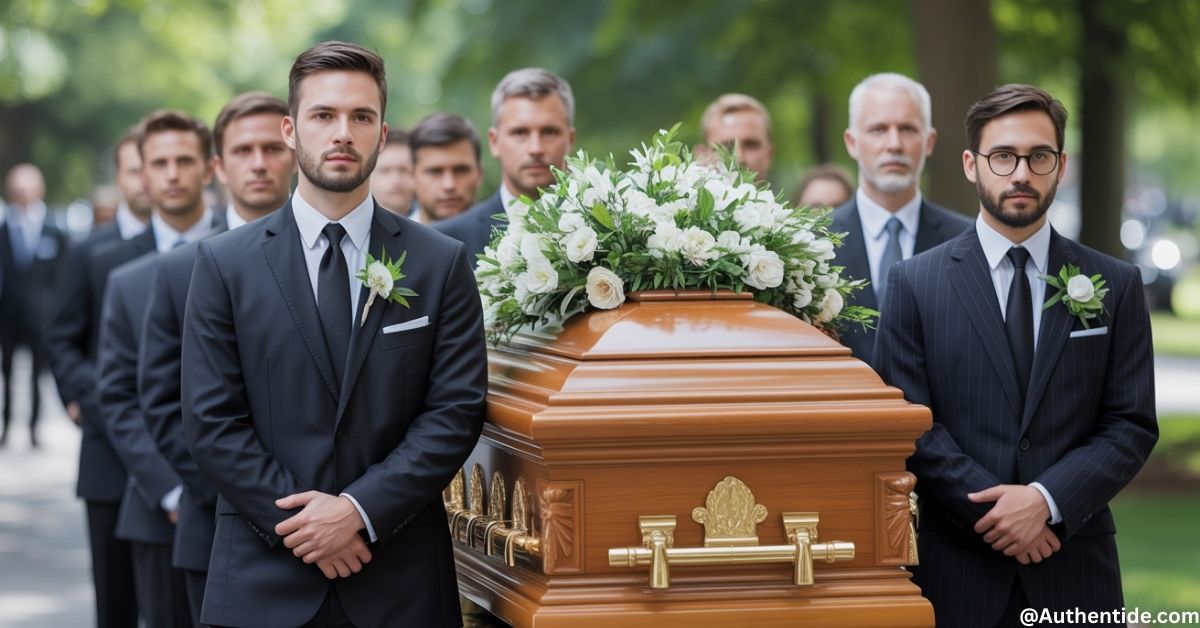Funeral procession etiquette and procedures hold deep cultural and emotional meaning. A funeral procession isn’t just a line of cars; it’s a moving symbol of respect, unity, and remembrance. For families, it is the final journey they take with their loved one. For friends, neighbors, and even strangers, it’s an opportunity to show compassion by giving space and honoring the moment. Too often, people are unsure how to act when encountering a procession, which can cause confusion or even distress. That’s why understanding proper conduct is so important.
When you see a long line of vehicles moving slowly with headlights on and sometimes flags on cars, you are witnessing a centuries-old tradition that crosses cultures and faiths. The rules aren’t written on road signs, but they matter. Families notice who waits patiently, who cuts in, and who shows respect. In fact, small acts of courtesy during a procession often become unforgettable memories for grieving families.
This guide is not meant to overwhelm you with stiff rules. Instead, think of it as a friendly roadmap. We will explore how a funeral procession works, what behaviors are respectful, and why these moments carry so much meaning. Along the way, you’ll find real-world examples like how you might write a thoughtful email to relatives or coordinate with a funeral director. By the end, you’ll feel confident about navigating any procession with dignity.
How Does a Funeral Procession Work?

A funeral procession typically begins at a church, funeral home, or family home and ends at the cemetery or crematorium. The lead car, often driven by a funeral director, sets the pace. Behind it follows the hearse, carrying the casket, then family vehicles, and finally other mourners. Each car usually has headlights on, sometimes with small flags or hazard lights, making the group easy to identify.
The final car often has two flags and activates its hazard lights. This signals the end of the procession to other drivers. Cars travel together at a slow driving speed to maintain unity, and all vehicles stay close enough to be seen as one continuous group.
📧 Scenario Example (Email to Family):
“Dear Uncle Robert, the procession will leave St. Mary’s Church at 11:00 a.m. Our family cars will follow directly behind the hearse. Please keep headlights on and stay close to the vehicle ahead so we remain together. The funeral directors will guide us throughout.”
Funeral Procession Etiquette for Members of the Procession
If you’re part of the procession, follow these etiquette guidelines:
- Arrive early: Don’t make others wait.
- Follow the lead car: Let the funeral directors manage timing.
- Drive slowly: Maintain a safe distance without leaving large gaps.
- Keep headlights on: This shows unity.
- Don’t switch lanes: Stay in line until the final destination.
📧 Scenario Example (Text to Cousin):
“Hi Sarah, remember to arrive early at the funeral home. Once we start, just keep your headlights on and stay close to the car in front. The director will handle the rest.”
When Should I Arrive?
Always arrive early. Being late creates stress for grieving families. Aim for at least 20 minutes before the scheduled departure.
📧 Scenario Example (Email Reminder):
“Dear Michael, please try to arrive at Greenfield Funeral Home by 9:40 a.m. so we can line up smoothly before departure.”
How Fast Should I Drive?
Processions move more slowly than normal traffic. Speeds vary, but usually remain around 20–30 mph in city areas. The lead car sets the tone: don’t rush, and don’t lag.
How Close Should I Be to the Vehicle in Front?
Maintain a safe distance. Stay close enough that other vehicles can’t easily cut in, but not so close that braking becomes unsafe.
Funeral Procession Etiquette for Other Drivers

Even if you’re not part of the procession, you play an important role in showing respect. Here’s what to remember:
- Be respectful: Yield the right of way.
- Don’t cut in: Never insert yourself between procession vehicles.
- Don’t pass: Passing is considered deeply disrespectful.
- Wait patiently: The delay usually lasts only a few minutes.
📧 Scenario Example (Notice from Funeral Home to Community):
“Dear Residents, please be aware of the funeral procession passing through Main Street tomorrow at noon. We ask for your patience and respect as families say their final goodbye.”
Funeral Procession Laws
Laws vary by state and country, but common rules include:
- Vehicles in a processional funeral often have the right of way, even through red lights (with police escort or local allowance).
- Drivers must keep hazard lights and headlights on.
- Cutting into a procession can result in traffic fines.
Always check your local traffic laws. Some places allow police escorts, while others rely on director assistance.
Planning a Funeral Procession
Planning a funeral involves both logistical and emotional considerations. Funeral directors often help families decide routes, coordinate with police if necessary, and prepare the lineup of vehicles. Families may choose symbolic routes—passing by a loved one’s favorite park, for example.
📧 Scenario Example (Email to Funeral Director):
“Dear Ms. Taylor, we’d like the procession to pass through Oakwood Park, as it was Anna’s favorite place. Could you advise on the safest route and timing?”
Final Thoughts
A funeral procession is more than just a convoy of cars; it’s a shared act of remembrance. Knowing the etiquette and procedures helps you support grieving families and avoid awkward mistakes. Whether you’re inside the line of cars or simply watching from the roadside, small gestures of kindness go a long way.

Your go-to place for smart synonyms and celebrity updates. Muhammad Hassan Abid is dedicated to creating useful, engaging content that informs, inspires, and truly serves your curiosity

